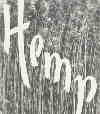
|
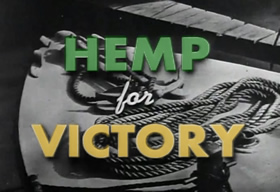 DURING THE SECOND WORLD WAR |

|
|---|
AMERICA’S HEMP CZAR:
YES WE REALLY DID HAVE ONE:
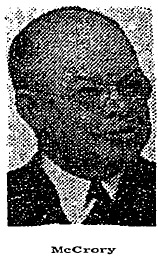
America entered the war in December (or the tail end) of 1941, and given the initial Japanese successes it became obvious by the spring of ’42 that America’s War factories were soon going to be facing some serious material shortages. In Terms of the subject at hand the situation was looking so dire that Washington even appointed a “Hemp Czar” to address the issue. Although according to the Wall Street Journal, McCroy himself disliked the term.
Wall Street Journal - Dec 4, 1943p1
"Home-Grown Hemp
U.S. Revives Industry Of Colonial Days to Assure Supply in War
Midwest Prairies to Grow Rope Material Normally Imported From Far East
Plan 71 Processing Plants
By Walter H. Waggoner - Staff Correspondent of the Wall Street Journal
Was Imported From Orient
Lack of cordage fiber---still needed for U. S. ship---has been a big handicap since war seized the Pacific. Sources of such valuable hard fibers as abaca (Manila hemp), sisal and jute were cut off by Japanese conquest of the Philippines and the Netherlands East Indies. "Imports from the Orient are virtually stopped," the Government asserted last March, "and there is no assurance that imports from Africa will continue." The War Production Board, as a result, began cutting down on the wasteful uses of these now-critical fibers. With Imports down to a disheartening dribble . . .
McCrory the Hemp "Czar"
Selected as director of the C.C.C. hemp division is genial, white-haired Samuel H. McCrory,department expert since 1907, and until his appointment, with the Bureau of Agricultural Engineering and Chemistry. Mr. . .
Hemp Processing Plants
The, 71 new plants won't consume as much critical material in their construction as the large number might lead one to believe, according to the hemp director, protested against the popular Washington title of "Czar". . ."
From what we’ve been able to find, Mc Croy himself was quite an interesting person in his own right. According to a 1946 Washington Post newspaper article:
Washington Post - 12-07-1946p7
“McCrory Ends 40 Years With Agriculture”
Samuel H. McCrory, . . has retired from the United States Department of Agriculture after 40 years’ service. During the war he headed the nation-wide hemp program of the Commodity Credit Corp., which produced and processed over 200 million pounds of hemp for the military and essential civilian use, replacing previously imported fibers. . . .
The Department of Agriculture cited his methods of survey of timbered lands and their drainage, his creation of the first soil erosion experiment station, snow surveys to predict water supplies for irrigation, power and elimination of flood hazards, creation of a farm tillage machinery laboratory, studies in fertilizer placement, development of mechanical pest control methods, and improved cotton ginning practices.
Part of his obituary (again from the Washington Post), reads as follows:
Washington Post - 02-22-1949pb2
S.H. McCrory Dies After Heart Attack
Samuel Henry McCroy, 69, pioneer agricultural engineer who was chief of the Department of Agriculture’s bureau of agricultural engineering when he retired in 1946, died Friday following a heart attack. . . .
Mr. McCrory was named in 1938 as the first recipient of John Deere gold medal, awarded by the American Society of Agricultural Engineers, as a memorial to the man who “hammered a piece of sawlade into a first all-steel moldboard, providing a plow that solved stubborn tillage problems.
A consultant on drainage problems during World War I, Mr. McCrory headed the department’s hemp supply problems during World War II. He retired in 1946. Mr. McCrory then went to Iraq and Iran on United Nations flood control projects and also made similar studies for the Egyptian government.
He was a member of the American Society of Civil Engineers, the Washington Society of Engineers, the Cosmos Club here, the Thirteen Club and the Takoma Lodge No. 29, F.A.A.M. . . . more
So all and all, even were he not to have been appointed the Hemp Czar during the war, he would still be seen as a bit of an American success story, if not an out and out hero. Here was a man who probably did a lot for the farming community, not just in the U.S., but it appears throughout the world.
However there are some amusing if not ironic tidbits that history has not yet accounted for. For instance take a look at the ten-dollar-bill below:
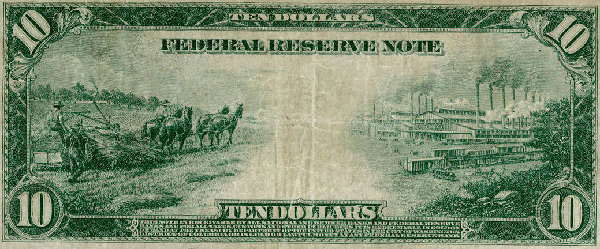
This 1910’s era bank note which was originally intended to be representative of both Agriculture as well as Industry. And in case you haven’t noticed it the farmer is harvesting a crop of Industrial Hemp. A situation that McCroy, employed by the Department of Agriculture at the time would have been all to well aware of.
It is also a fact that (and some of you none historians out their might not believe this); Before there was the D.E.A. (1970-72), there was the Federal Bureau of Narcotics (1930), and before that there was the Bureau of Prohibition (1920’s, narcotics sub-unit thereof). However, few if any understand that, before that narcotic law enforcement was attributed to the Bureau of Chemistry, which was attached to the Department of Agriculture. Which would have meant that McCory would have been working side by side with the narc’s of his day. And it is also a fact that it was these narc’s (not Anslinger) that were in fact the creators of we today would come to know as the “Reefer Madness Campaign.” Maybe their most important work toward that end was the following report:
1914 - Report of investigation in the State of Texas, particularly along the Mexican border, of the traffic in, and consumption of the drug generally known as "Indian hemp," or cannabis indica : known in Mexico and states bordering on the Rio Grande River as "Marihuana, " sometimes also referred to as "Rosa Maria, " or "Juanita." Author: Smith, R. Publication: Washington: Dept. of Agriculture, Bureau of Chemistry, - Year: 1917Which, as far as reefer madness was concerned, its contents were something that would do Anslinger proud. And it would also correspond (in time frame) to the first newspaper articles linking Marihuana and violent crimes. Coincidence, maybe, and it should be noted that McCory himself would have been a very junior official at the time. But still, he must have known that something was amiss and for whatever reason never brought the subject up; not even during the war as the Hemp Czar. One can only wonder what would have happened had he opened his mouth up when he had the chance. A pity.
Of Historical Note: Some might wonder how the Department of Agriculture ended up controlling the narc’s for a while. For this we have one Harvey Wiley for the creation of what we now know as the Wiley laws.
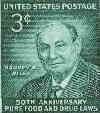
|
WHO WAS AMERICA'S FIRST DRUG CZAR THE CREATION OF THE REEFER MADNESS CAMPAIGN |
|---|
WANT TO KNOW MORE:
=====================
Due to space / download time considerations, only selected materials are displayed. If you would like to obtain more information, feel free to contact the museum. All our material is available (at cost) on CD-Rom format.
CONTACT PAGE
 BACK TO SECTION IV |